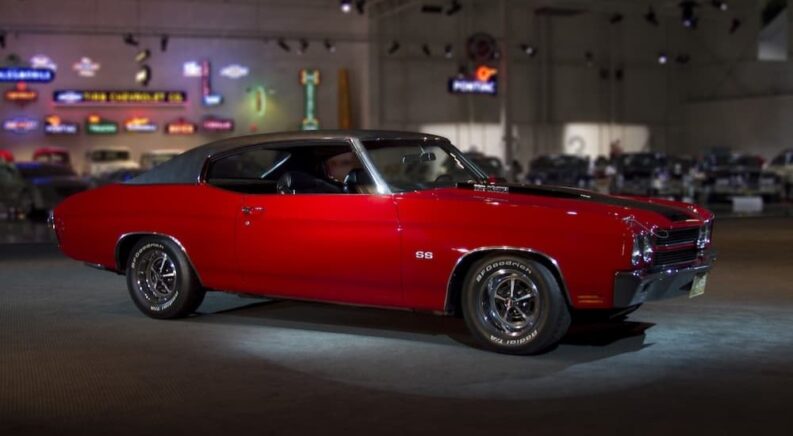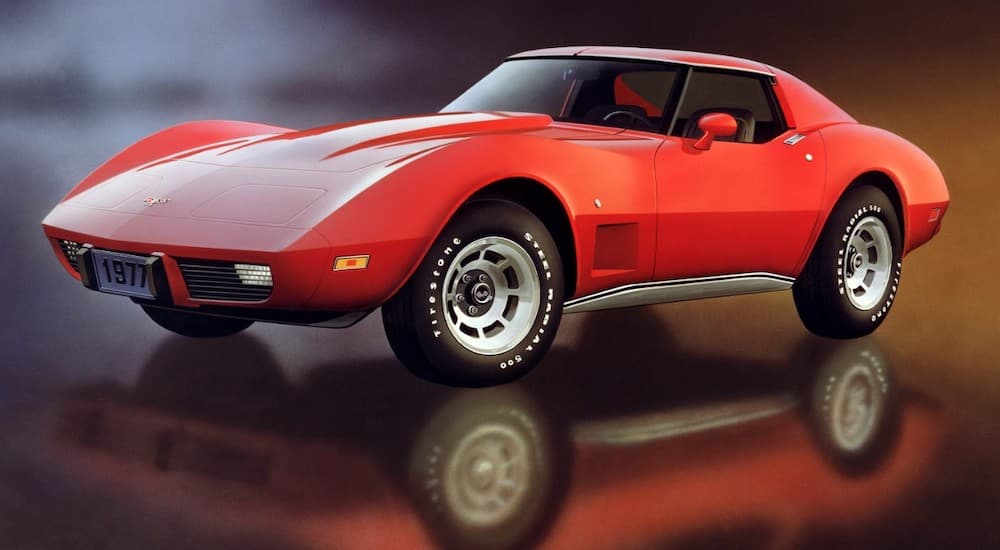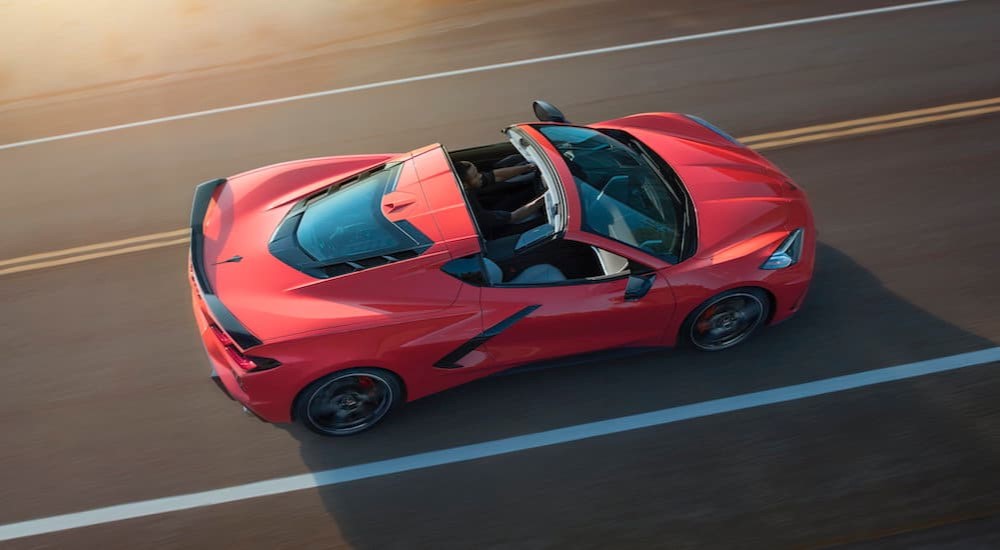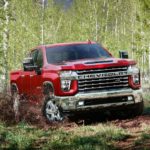Between heads-up displays and paddle shifters, heated seats, and power running boards, today’s vehicles are packed with more novel gadgetry than ever before. While some of these features are inherently useful, features like gesture-based controls can come off as a bit of a gimmick that’ll have you looking like you’re conducting an orchestra as you speed down the highway. There’s nothing wrong with this type of automotive experimentation, but at the end of the day, a car, truck, or SUV is always going to be judged by what’s under the hood.
Case in point: When you walk into a Chevy dealer, you might gravitate towards the model with the most eye-catching style, plushest interior, or shiniest wheels, but in the end, it’ll be more practical considerations like horsepower, torque, and fuel economy that really seal the deal. The bowtie brand has become synonymous with robust and reliable performance, and the automaker’s engines have long been the foundation on which that reputation lies.
From the Corvette to the Camaro, Chevy has produced some of the most electrifying vehicles in American automotive history, but they wouldn’t be worth their weight in scrap metal if it weren’t for the legendary power plants lurking between the wheels. Join us as we take a closer look at some of the most popular Chevy engines throughout the decades and see how this brand has become synonymous with innovation and performance.
1950s: 265 “Turbo-Fire” V8
The 1950s were the birth of American car culture. From Chuck Berry’s “Maybellene” to The Medallions’ “Buick ’69”, cars were dominating the pop charts—and pop culture in general—as a new generation of thrill-seeking post-WWII drivers hit the streets.
The ’50s also saw the debut of one of the most iconic engines of the hot-rod era in the first-generation small-block Chevy V8. The V8 was revolutionary for its time, boasting an ideal mix of power and accessibility that made it the go-to choice for those looking to customize their ride.
Originally developed as an upgrade for the standard “Blue Flame” engine on the 1955 Chevy Corvette, the 265 “Turbo-Fire” V8 also boasts one of the fastest production cycles in automotive history, with the engine jumping from drawing board to factory-ready in just 15 weeks. The 162-hp engine would set the stage for all Chevy engines to come, informing the design of everything from Chevy’s celebrated big-block engines to the LS7s and LS9s you’ll find in some of today’s most thrilling models like the Chevrolet Corvette ZR1 and Z06.
1960s: 409 “W” Motor
If the ’50s were the birth of American car culture, the ’60s were its coming-of-age. Flip on the radio at the time, and you’ll be met with no shortage of car-themed hits topping the charts, with acts like The Beach Boys carving out a niche by cataloging some of the decade’s most exhilarating rides. Between their “Little Deuce Coupe” and the “Ballad of Ole’ Betsy” to the T-Bird that Daddy threatened to take away, Brian Wilson & Co. were no strangers to the allure of the V8, basically composing a ready-made advertise for Chevy with their 1962 hit “490”.
Chevy’s small-block engines might have been fine for lighter-duty applications, but when it came time to find a motor for their new medium-duty trucks and heavier cars, the infamous big blocks hit the scene. These large-displacement, naturally-aspirated engines upped the bar for production engines at the time, ushering in a new era of automotive design inspired by a “bigger is better” ethos that would dominate the industry until the introduction of widespread forced induction decades later.
Produced from 1961 to 1965, the Chevy Big Block 409 was a 6.7-liter engine putting out between 360 and 425 hp. The most famous version would have to be the 409-hp one in the Impala SS that—thanks to the dual four-barrel aluminum intake manifold immortalized in “409” (“She always turns in the fastest times/ My four-speed dual quad posi-traction 409”)—could produce one horsepower per cubic inch.
1970s: 454 LS6 V8
For many muscle car enthusiasts, the 454 LS6 is the pinnacle of big-block V8 engineering. Between its high compression, solid lifter camshaft, upsized valve lift, and—most importantly—a hulking 800-cubic-feet-per-minute (CFM) Holley carburetor, the 454 was the perfect complement to some of the era’s most thrilling Chevy rides including the Chevelle, El Camino, and Corvette. The LS6 had a listed power output of 450 hp and 500 lb-ft of torque, though many suspect the actual horsepower number might have been closer to 500.
That sort of power was almost too much for many Chevy cars at the time, which—owing to the considerable torque and horsepower—had the tendency to shred their tires when you put the pedal to the metal. The Chevelle SS could reach a top speed of up to 115 mph with a 454 LS6 under the hood, which is particularly impressive when you consider the muscle car’s two-ton weight. A true 500-hp version of the LS6 would go on to be offered as a crate engine from Chevy Performance, finding its way under the hood of plenty of hot rods and project cars in the decades since.
1980s: LT5 350 V8
Arguably Chevy’s most famous engine to date, the LT5 350 represents the pinnacle of small-block technology. The humble 350 would power some of the most renowned Chevy models of their time but, unlike many of the engines mentioned on this list, would not be limited to the performance segment. In fact, the 350 could be found on a stunning variety of gas-powered vehicles, from stolid station wagons and pickup trucks to commercial vehicles, boats, industrial equipment, and—in one daring experiment—airplanes.
While the 350 was first developed in 1955, the 1980s would serve as its heyday as it finally met its match in a new Corvette supercar project. The Corvette was the go-to sports car for the street racing set but was relatively underpowered with a 240-hp pushrod small-block. While this version of the ‘Vette could run the quarter-mile in 13 seconds and reach speeds of up to 150 mph, Chevy knew it had more potential and teamed up with Lotus to develop a high-performance version dubbed the ZR1.
Powered by an all-new version of the LT5 with dual-overhead cams and 32 valves, the 350 could churn out 375 hp, which was double what the stock model was capable of at the time. The LT5’s most impressive achievement? Setting a 175.8 mph speed average during a 24-hour endurance race.
1990s: 5.7L LS1 V8
Debuting in 1997, the 5.7 LS1 would mark a major evolution in small-block design. While the engine featured the same 4.4-inch bore spacing as previous small blocks, that was about it as far as the similarities were concerned. Based around a fully aluminum block that was 50% lighter than its predecessor in the second-generation LT1, the 350-hp LS1 boasted an improved power-to-weight ratio along with coil-on-plug ignition thrown in for good measure.
Initially developed to power the fifth-generation Corvette (and later the F-body Camaro and Pontiac Firebird), the LS1 would go on to have a major impact on the industry as a whole, powering not only the next 20 years of GM V8 muscle and sports cars but also informing the design of the Vortec LS engines that would come to dominate the pickup sector.
2000s: 7.0L LS7 V8
The huge 7.0-liter LS7 has the distinction of being the most powerful naturally-aspirated engine in Chevy’s long history. 505 hp and 470 lb-ft of torque might not be that noteworthy in a turbocharger vehicle (or some high-performance EVs), but when you’re relying on pure, 100% gas power, it’s an accomplishment worth highlighting. This feat was achieved thanks to a number of innovative design choices, including the first-ever use of dry-sump oiling in a production model.
Chevy’s engineers also nixed the standard cast-iron cylinder liners for a new press-fit iron design that, along with a forged-steel crank, hypereutectic pistons, titanium rods, and dowelled steel main caps, gave the LS7 a top speed of 198 mph and a mid-eleven-second quarter-mile time. Limited to the 2006-2013 Chevrolet Corvette Z06 and 2014-2015 Chevrolet Camaro Z28, the LS7 etched its name in Detroit history as a true feat of automotive engineering.
2010s: 6.2L LS9 V8
If Chevy can squeeze 505 hp from a naturally aspirated small-block engine, what can it do with a little forced induction? The LS9 is the answer to that riddle, adding a Roots-style supercharger to a 6.2-liter engine to give drivers a rubber-burning 638 hp (and 604 lb-ft of torque) to work with. The aluminum-cast block is built with larger bulkheads than the LS7, and the titanium rods, steel crank, and forged pistons with a 9.1:1 compression ratio are all nice features, but the centerpiece of the LS9 has to be the Eaton supercharger.
The 2.3-liter, four-lobe unit provides 10.5 psi of boost feed through a dual-core intercooler, giving 2009-2013 Corvette ZR1 owners a top speed of 205 mph. Those looking to integrate the LS9 into their own automotive creations can buy a crate version for $22,000. The LS9 presents a marvel of modern engineering from Chevy, vaulting the ZR1 to the top of the domestic performance sector.
2020s: TBD
While it’s still too early to call the best Chevy engine of the 2020s, there are already some strong contenders. From the L8T under the hood for the brawny Chevy Silverado HD pickup to the 495-hp LT2 that debuted on the 2020 Corvette Stingray, Chevy isn’t showing any signs of slowing down when it comes to building a better engine. Chevy parent company GM has announced plans to phase out vehicles using internal combustion engines by 2035, but it’s not time to say goodbye to gas just yet.
The company recently announced a $854 million investment into its V8 production facilities as it prepares to launch the sixth generation of small-block engines. Expected to be more powerful and efficient than any Chevy small-blocks to date, the sixth generation will be a fitting swan song for the venerable V8.







